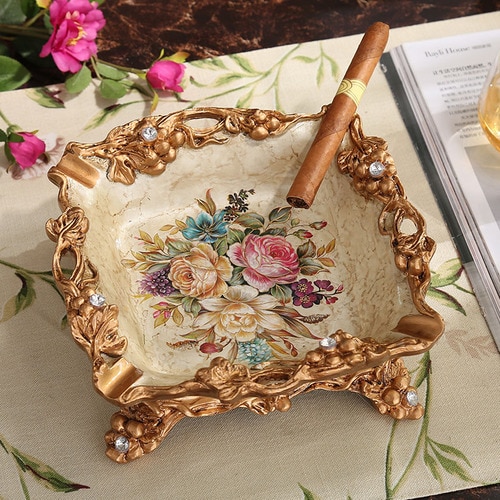
The humble ashtray, once a ubiquitous item in homes, offices, and public spaces, has seen a significant transformation over the years. From its utilitarian beginnings to becoming artistic symbols of an era, the history of it is an intriguing tale of social trends, cultural changes, and the evolution of smoking habits. Join us as we delve into the captivating journey and their place in our society.
1. The Birth of Ashtrays:
These trace their origins back to ancient times when civilizations first discovered the pleasures of tobacco. The earliest forms of it were simple and made from clay or stone, designed to collect ash and cigarette butts. Throughout history, these have evolved alongside smoking practices, with different materials and designs reflecting the prevailing tastes and artistic styles of each era.
2. The Rise of Ashtray Manufacturing:
The Industrial Revolution marked a turning point in production. With the advent of mass manufacturing techniques, ashtrays became more affordable and accessible to the general public. Glass, metal, and ceramics emerged as popular materials, allowing for a wide variety of shapes and sizes. These also began to bear decorative motifs and advertising messages, making them not just functional but also attractive pieces to have.
3. The Golden Era of Ashtray Design:
The mid-20th century witnessed the golden era of design, characterized by a fusion of modernism and artistic expression. Renowned designers and artists like Walter Bosse, Georges Briard, and Eva Zeisel contributed to this artistic movement, creating that transcended mere functionality. Abstract shapes, vibrant colors, and intricate patterns turned into works of art that adorned homes, hotels, and restaurants.
4. Ashtrays as Symbols of Social Change:
As smoking became less prevalent due to health concerns and changing social norms, the once-ubiquitous ashtray began to disappear from public spaces. However, the decline of it as everyday items coincided with their rise as artifacts symbolizing shifting attitudes towards smoking and social behaviors. From the glamourous depictions of Hollywood’s golden age to the anti-smoking campaigns of the later decades, these bear witness to the changing narratives surrounding tobacco and its consumption.
5. A Versatile Legacy:
While the decline of smoking has undoubtedly impacted the prevalence, their legacy endures. In modern times, these have found new life as versatile and decorative items. Some artists and designers repurpose vintage into unique art pieces or incorporate them into innovative designs, celebrating their historical significance. As nostalgic reminders of a bygone era, these continue to evoke memories of social gatherings and moments of relaxation.
Conclusion:
The history of ashtrays takes us on a captivating journey through time, reflecting the evolution of smoking habits, cultural shifts, and design aesthetics. From their simple beginnings to becoming symbols of social change and versatile artifacts, these are not only functional objects but also repositories of social history. As we appreciate their unique charm and significance, let us remember that the story of collectors is not just about smoking but also about the broader tale of human creativity and the objects that shape our lives.


